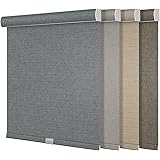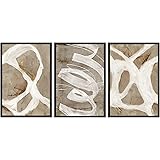Unlock Your Home’s Potential: Mastering Design Principles for a Space That Truly Shines
Studies reveal that a well-designed and organized home can significantly boost feelings of calm, productivity, and overall well-being. Yet, a striking number of homeowners find their living spaces just feel… off. It’s a common dilemma: you’ve decorated, you’ve arranged, but something isn’t quite clicking. If your space feels disconnected, chaotic, or simply uninviting, you’re not alone. The good news, as explored in the video above, is that professional interior stylists consistently rely on six fundamental design principles to transform any room from ‘meh’ to magnificent. These aren’t just arbitrary rules; they are the bedrock of creating interiors that are not only beautiful but also deeply comforting and functional.
Understanding these core concepts allows you to pinpoint exactly why your room isn’t working and how to correct it, achieving that cohesive, intentional look you’ve envisioned. Let’s delve deeper into each of these powerful design secrets, expanding on the insights shared in the video to equip you with actionable strategies for your own home.
1. The Art of Balance: Creating Visual Harmony in Your Space
Balance is more than just symmetry; it’s about distributing visual weight within a room to create a sense of equilibrium. Think of it as ensuring no single area feels too heavy or too light, preventing your eye from getting stuck or feeling overwhelmed. Achieving this balance is paramount in interior styling, as it directly impacts how comfortable and organized a room feels.
Symmetrical Balance: Order and Serenity
Symmetrical balance is often the easiest to achieve and inherently creates a sense of calm and formality. It involves mirroring elements on either side of a central axis, much like the two identical table lamps anchoring a bed in the video’s example. This approach is highly effective for bedrooms, dining rooms, and formal living areas. For instance, flanking a fireplace with matching bookshelves or placing two identical armchairs opposite a sofa creates a classic, orderly feel. Research indicates that predictable visual patterns, like symmetry, can reduce cognitive load, leading to a more relaxed state for inhabitants.
Asymmetrical Balance: Dynamic Interest and Movement
When symmetrical balance feels too rigid, asymmetrical balance offers a dynamic alternative. Here, different objects carry equal visual weight without being identical. The key is to consider an object’s size, shape, color, and texture. As the video explains, a tall plant on one side can effectively balance a cluster of stacked books and a sculptural vase on the other. This requires a more nuanced eye but rewards you with a space that feels curated and intriguing, often perceived as more modern and less formal. For example, a large, abstract piece of art might be balanced by a grouping of three smaller, distinct objects below it on an adjacent wall, rather than a single, mirror-image item.
Radial Balance: Cozy Invitation and Intimacy
Radial balance draws the eye inward, creating a natural focal point and a sense of connection, making it ideal for intimate settings and conversations. The video highlights how circular elements like rugs or coffee tables act as anchors, around which furniture can be arranged. Imagine a round dining table with chairs radiating outwards, or a circular area rug grounding a cluster of armchairs around a central coffee table in a living room. This arrangement fosters interaction and coziness. Studies on spatial perception suggest that circular layouts can promote feelings of inclusion and community, making them perfect for gathering spaces.
2. Harmony and Unity: When Elements Speak the Same Language
Harmony and unity are the glue that holds a design together, ensuring that all elements feel cohesive and “go together,” as the stylist explains. It’s about achieving a sense of belonging among diverse pieces, whether you’re mixing Art Deco with Japandi or contemporary with eclectic. This is where your chosen design theme truly comes to life, guiding decisions on shape, form, color, texture, and pattern.
To cultivate unity, designers often repeat certain elements throughout a space. This could mean repeating a specific color palette, echoing certain shapes (e.g., using rounded edges on furniture and decor), or incorporating similar textures like wood grains or metallic finishes. For instance, if your living room features a natural wood coffee table, repeating that wood tone in picture frames, a side table, or even a decorative bowl will establish continuity. A room where items “speak the same language” doesn’t mean everything matches perfectly; it means their underlying characteristics complement each other, creating an effortless flow that makes the room feel settled and comfortable.
Achieving harmony also involves a subtle understanding of contrast. While contrast creates interest, it must still fit within the overarching theme. Consider a room with predominantly soft, neutral colors. Introducing a pop of a vibrant accent color, repeated sparingly in a throw pillow and a piece of art, creates unity through controlled repetition, rather than overwhelming the space with disparate hues.
3. Rhythm: Guiding the Eye Through Repetition
Rhythm in home design is the repetition of visual elements, creating a sense of movement and guiding the eye through a space. Just as a musical rhythm provides structure and anticipation, visual rhythm provides a comforting, predictable flow. The transcript emphasizes that our eyes crave pattern, even if our brains process it subconsciously. When rhythm is absent or poorly executed, a room can feel static or disorienting.
There are several ways to establish rhythm:
- Repetition of Shape: Echoing a particular shape throughout a room. If you have a square coffee table, incorporating square throw pillows or artwork with strong geometric lines can create a subtle, pleasing rhythm. The video’s example of repeating a circular coffee table’s shape with a circular tray or a curved lamp is a perfect illustration. This can also extend to architectural features, like repeating arches in doorways or windows, which naturally draw the eye from one space to the next.
- Repetition of Color: Strategically scattering pops of the same color across a room. This doesn’t mean painting all walls the same shade; it means using an accent color in textiles, accessories, and art to create visual trails. Imagine forest green velvet pillows on a sofa, a small green art print on an adjacent wall, and green taper candles on a mantelpiece. This thoughtful distribution ensures the color feels integrated, not isolated, making the room feel more cohesive and dynamic.
- Repetition of Texture or Material: Repeating materials like brushed brass, matte black, or specific wood finishes throughout a room in light fixtures, hardware, or decorative objects. This adds a tactile rhythm and depth.
Effective rhythm prevents a room from feeling monotonous while simultaneously creating visual interest. It’s about creating a visual story that unfolds as you move through the space, making the entire design feel more intentional and harmonious.
4. Emphasis and Focus: Giving Your Space a Star
Every room needs a “Beyoncé”—a standout element that captures attention and grounds the space, as humorously put in the video. This focal point is the first thing your eye is drawn to, providing visual clarity and preventing the feeling of a chaotic, busy environment where “everyone’s competing.” Without emphasis, your eyes work overtime trying to make sense of the room, leading to that uneasy, “off” sensation.
A focal point can be a prominent architectural feature like a fireplace, a large window with a stunning view, or a built-in bookshelf. More often, it’s a strategically chosen piece of furniture or art: a grand sofa, a captivating piece of artwork, a unique light fixture, or a statement headboard in a bedroom. The key is to select one or two primary elements to lead and then arrange other, more subdued pieces to support them—the “backup dancers” that make the star shine brighter.
To establish emphasis effectively:
- Size and Scale: A large, impactful item naturally draws attention.
- Color and Contrast: A vibrant color against a neutral backdrop, or a dark piece in a light room, creates an immediate focal point.
- Positioning: Centering an object, or placing it at the end of a strong visual line, can highlight its importance. For instance, the video mentions how repetition can lead up to and stop at a central item, thereby emphasizing it through positioning.
- Lighting: Using accent lighting (spotlights, picture lights) to illuminate a particular feature.
Remember, not everything can be loud. Edit your space by allowing the background elements—soft textures, neutral tones, negative space—to play a supporting role. This “visual pause” gives the eye room to breathe and appreciate the key features, making the entire room feel more intentional and less overwhelming.
5. Contrast and Variety: Adding Depth and Interest
If everything in a room is uniform—same textures, same shapes, same colors—the space will inevitably fall flat. Contrast and variety are the design principles that inject visual interest, depth, and personality. They are about combining elements that differ, but still complement each other, preventing monotony and creating a dynamic sensory experience. The way two things are perceived when placed together can create importance or depth.
The video astutely points out that if your sofa is linen, bringing in something glossy like a mirror or a silver tray creates an appealing textural contrast. If your palette is soft and neutral, anchoring it with something dark—a black picture frame, a deep wood cabinet, or a stack of books with dark spines—adds a grounding element and prevents the room from feeling washed out. This isn’t about disrupting the vibe; it’s about enriching it.
Consider variety in several dimensions:
- Texture: Mix rough with smooth, soft with hard, shiny with matte. Combine a plush velvet sofa with a sleek marble coffee table, or a chunky knit throw with a smooth leather armchair. This stimulates touch and sight.
- Shape and Form: Incorporate a blend of geometric (squares, rectangles, triangles) and organic (curves, circles, irregular) shapes. If your furniture is predominantly rectilinear, add a round mirror or a curved accent chair. This creates visual complexity.
- Color: Introduce varying shades, tones, and hues within your chosen palette. Even in a neutral room, contrast can come from combining warm beiges with cool grays, or light tones with dark accents.
- Proportion and Scale: Varying the size of objects adds interest. A mix of tall and short, wide and narrow elements keeps the eye moving.
Just as a sentence needs punctuation and pauses to convey meaning, a room needs variety to tell its story. It provides visual punctuation, preventing the eye from getting bored and deepening the overall aesthetic.
6. Proportion: The Foundation of Scale and Harmony
Proportion is the final, often intangible, design principle that dictates how objects relate to one another and to the space they inhabit. It’s why a piece of art that looked perfect in a large gallery might feel overwhelming in your smaller living room, or why a tiny rug can make an entire furniture arrangement feel like it’s floating. Proportion is about achieving a sense of balance and harmony through the correct relative size and scale of elements within a room.
The video touches on the critical importance of scaling accessories to match larger furniture pieces. If you have a large, chunky sofa, tiny decorative items will look lost and insignificant. Instead, opt for oversized art, a substantial floor lamp, or larger cushions that can hold their own next to the dominant piece. This creates a cohesive visual weight and prevents the room from feeling disjointed.
A particularly common pitfall highlighted in the video is the size of area rugs. A rug should ground the space, acting as a foundation for your furniture. Ideally, all four legs of your primary furniture pieces (sofa, chairs) should sit comfortably on the rug. At a minimum, the front two legs should be on the rug. A rug that is too small not only looks awkward but also makes the entire furniture arrangement feel unanchored and visually unstable. Investing in the correct size rug is one of the most impactful ways to correct poor proportion in a living area.
While advanced concepts like the Golden Ratio or Le Corbusier’s Modular system offer precise mathematical approaches to proportion, for everyday interior design tips, the key is simply to “feel” what looks right. Does the artwork feel dwarfed by the wall? Is the coffee table too far from the sofa to be functional? Do the decorative items disappear on a large surface? Trust your instincts, but always remember that large items generally require larger companions, and foundations like rugs need to be generously sized to effectively ground your space. Once you achieve the right proportions, everything in the room will suddenly “click,” creating an effortless flow and visual ease.
Q&A: Fixing Your Home’s ‘Off’ Feeling
Why does my home still feel ‘off’ after decorating?
Your home might feel ‘off’ because it could be missing key interior design principles like balance, rhythm, or proper proportion. Applying these principles helps create a cohesive, comfortable, and intentional living space.
What are some basic design principles that can help my home?
The article highlights six essential design principles: Balance, Harmony & Unity, Rhythm, Emphasis & Focus, Contrast & Variety, and Proportion. Understanding these can help you create a more cohesive and intentional look in your home.
What does ‘Balance’ mean in home design?
Balance in home design is about distributing visual weight evenly within a room, ensuring no single area feels too heavy or too light. This creates a sense of equilibrium, making your space feel comfortable and organized.
What is a ‘focal point’ in a room, and why is it important?
A focal point is a standout element, like a fireplace or a large piece of art, that immediately draws your eye and grounds the space. It prevents the room from feeling chaotic by giving your eyes a place to rest.
How important is the size of an area rug?
The size of an area rug is very important because it grounds your furniture and defines the living space. A rug that is too small can make your furniture arrangement feel unanchored and visually unstable.











